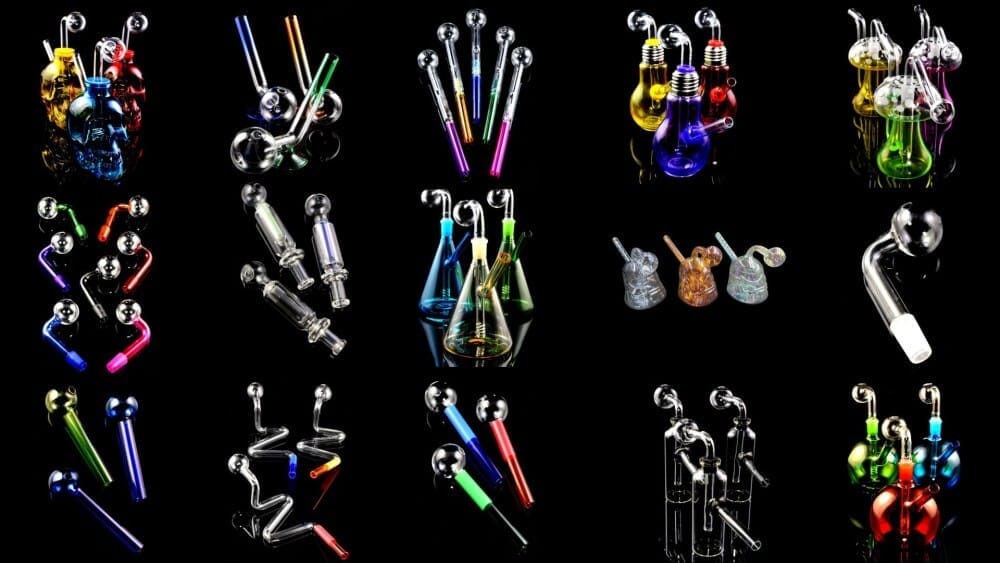The Ultimate Guide to Oil Burner Pipes: Everything You Need to Know
Oil burner pipes are a popular smoking device that has been utilized by many individuals for years. Whether you are new to the world of oil burner pipes or consider yourself a seasoned user, this ultimate guide is here to provide you with everything you need to know about these handy devices. From understanding how they work and their different components, to tips on maintenance and proper usage, this comprehensive article aims to be your go-to resource for all things related to oil burner pipes. So sit back, relax, and let us guide you through the ins and outs of these versatile smoking tools.
How Oil Burner Pipes Work: An Overview of the Mechanics
- Understanding the Basics: Oil burner pipes work by heating a bowl containing oil or concentrates using a flame from a lighter. The heat vaporizes the oil, creating smoke that is inhaled through a mouthpiece attached to the pipe.
- Materials and Components: These pipes are typically made of glass or quartz, which can withstand high temperatures without breaking. The design includes a stem for holding the heated concentrate, as well as various chambers and openings for airflow control.
- The Process: Once the oil is heated and turned into vapor, it travels through the pipe’s chambers before reaching your lungs. This process allows for efficient consumption of concentrates while providing smooth hits with robust flavors.
The Different Components of an Oil Burner Pipe
- Bowl: The bowl is where the oil or concentrate is placed before heating. It is typically made of glass and can vary in size and shape.
- Downstem: The downstem connects the bowl to the water chamber, allowing smoke to travel from the bowl through water for filtration.
- Water Chamber: This part of the pipe holds water that helps cool and filter the smoke as it passes through. It can come in different shapes, sizes, and designs.
Each component plays a crucial role in how an oil burner pipe functions. Understanding these parts can help you choose or maintain your oil burner pipe effectively.
Choosing the Best Oil Burner Pipe for Your Needs
When selecting an oil burner pipe, consider the material it’s made from. Glass pipes are popular for their clean taste and ability to retain heat well. Silicone pipes are durable and easy to clean, making them a low-maintenance option.
Size matters when choosing an oil burner pipe; think about where you’ll be using it most often. If portability is important to you, opt for a smaller pipe that can easily fit in your pocket or bag. On the other hand, if you plan on using it primarily at home, a larger pipe may provide a better smoking experience.
Don’t forget about design aesthetics when picking out an oil burner pipe. Whether you prefer something sleek and simple or colorful and eye-catching, there are plenty of options available to suit your personal style preferences.
Maintenance Tips for Keeping Your Oil Burner Pipe in Top Condition
- Clean Regularly: Make sure to clean your oil burner pipe frequently to prevent buildup and ensure smooth airflow. Use pipe cleaners, cotton swabs, and isopropyl alcohol for a thorough cleaning.
- Inspect for Damage: Regularly inspect your oil burner pipe for any cracks, chips, or clogs. Address any issues immediately to prevent further damage and maintain optimal performance.
- Use Proper Storage: When not in use, store your oil burner pipe in a safe place away from potential hazards like heat or direct sunlight. Proper storage can help prolong the life of your pipe.
Proper Usage: Dos and Don’ts for Using Your Oil Burner Pipe
Dos and Don’ts for Using Your Oil Burner Pipe
Dos:
- Do clean your oil burner pipe regularly to avoid residue buildup.
- Do use high-quality concentrates to ensure a smooth smoking experience.
- Do handle your oil burner pipe with care to prevent accidental breakage.
Don’ts:
- Don’t overfill your oil burner pipe, as this can lead to spills and waste of concentrates.
- Don’t heat the bowl too quickly, as it can damage the glass or cause splintering.
- Don’t share your oil burner pipe with others to maintain hygiene and prevent the spread of germs.
Never Use More Heat Than Needed With An Oil Burner Pipe
- Use caution: When using an oil burner pipe, it is essential to avoid using excessive heat.
- Overheating risks damage: Applying too much heat can lead to cracking or shattering the glass, rendering the pipe unusable.
- Proper technique is key: It is crucial to find the right balance of heat for efficient vaporization without causing harm to the pipe.
Remember that being mindful of how much heat you are applying when using an oil burner pipe will not only extend its lifespan but also ensure a more enjoyable and safe smoking experience.
Finding Reliable Oil Burner Pipe Suppliers Online
When searching for oil burner pipe suppliers online, it’s important to look for reputable websites that specialize in smoking accessories, like It’s 4:20 Somewhere online head shop. This company has positive customer reviews and a wide selection of products to choose from.
Be cautious of cheaply priced pipes as they may be made of inferior materials that could be harmful when heated. It’s worth investing in a high-quality pipe from a trusted supplier to ensure your safety and satisfaction.
Check the shipping policies and return options before making a purchase to avoid any potential issues down the line. Make sure the website is secure with proper encryption to protect your personal information during the transaction process.
The Difference Between Oil Burner Pipes and Bongs
Oil burner pipes are typically smaller in size compared to bongs, making them more discreet and easier to carry around. They are designed specifically for smoking oils and concentrates, offering a more concentrated and potent experience. On the other hand, bongs are usually larger in size with a water filtration system that helps cool down the smoke before it reaches your lungs.
While oil burner pipes are known for their simplicity and effectiveness in smoking oils, bongs offer a smoother smoking experience due to the water filtration process. Oil burner pipes require direct contact with heat to vaporize the concentrates, while bongs use indirect heat from a flame or lighter. Ultimately, the choice between an oil burner pipe and a bong comes down to personal preference and desired smoking experience.
Buy oil burner pipes online at It’s 4:20 Somewhere online headshop





